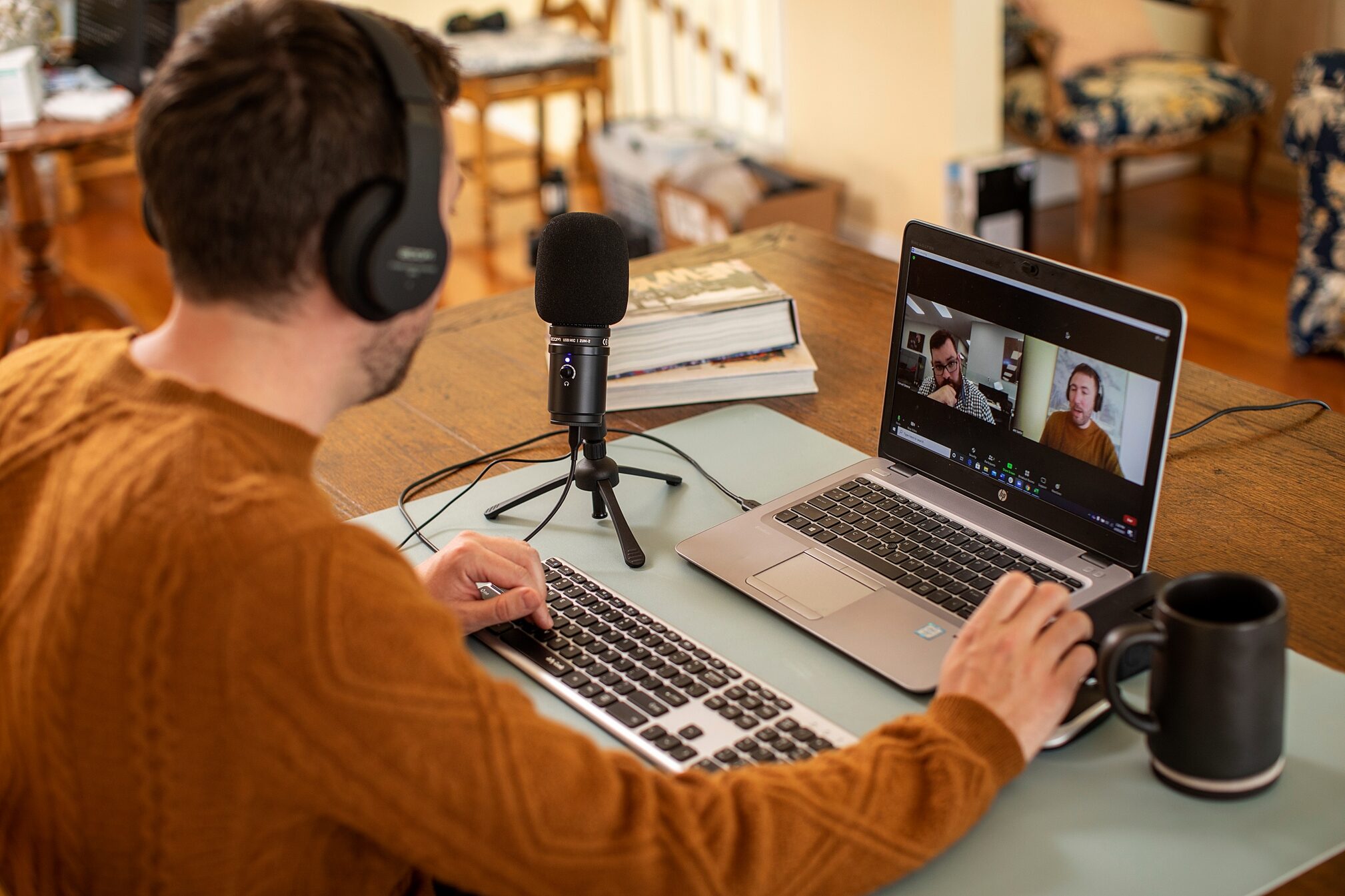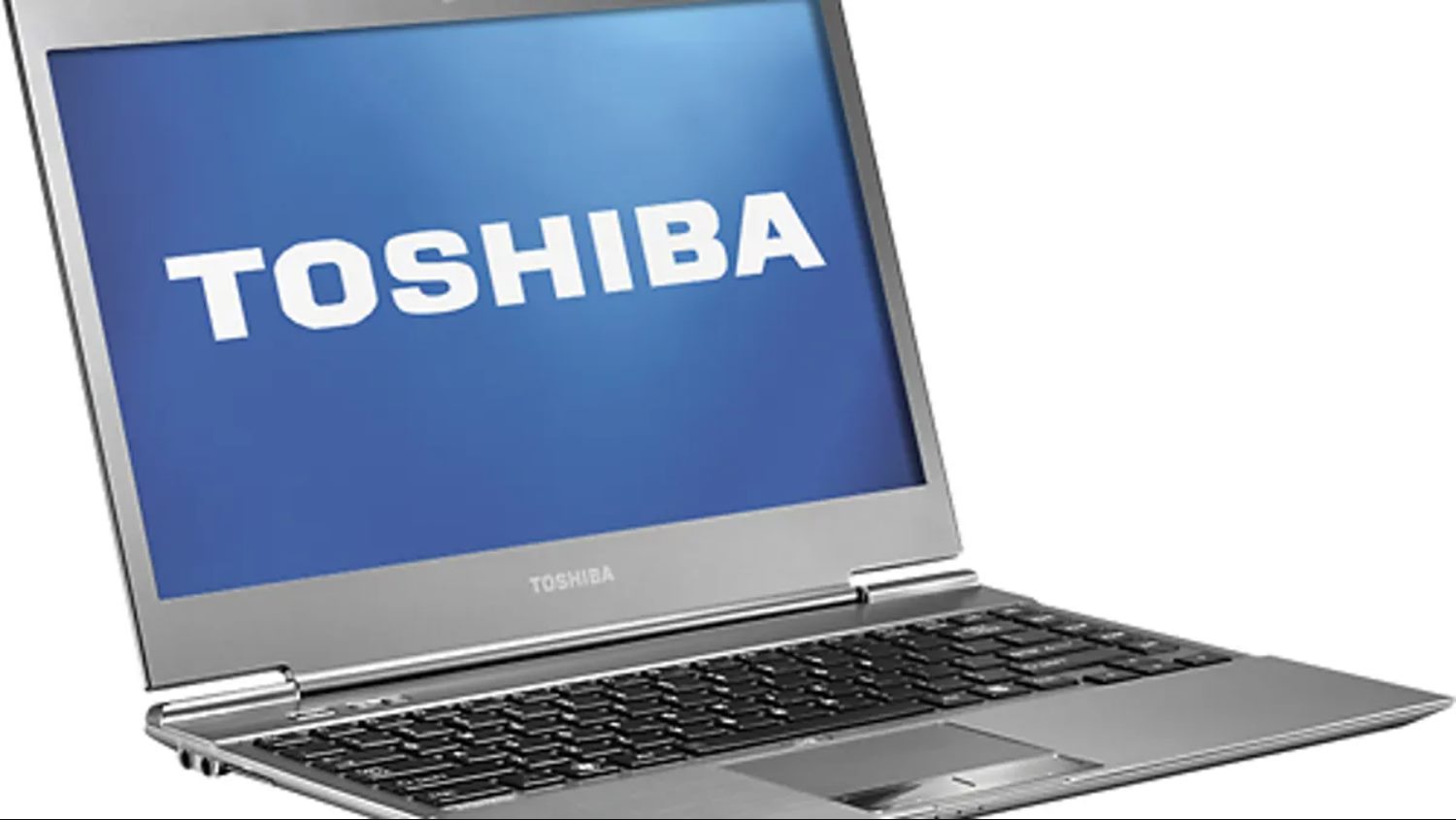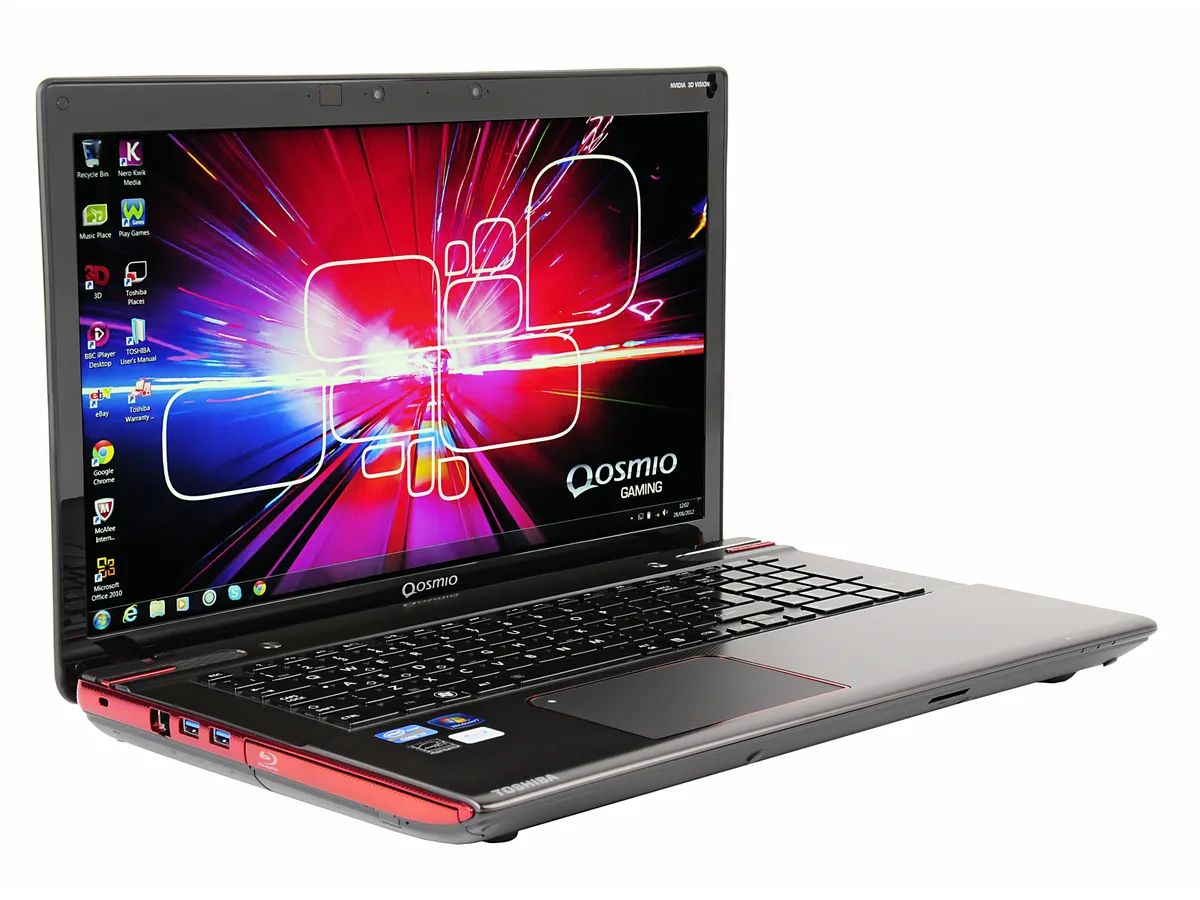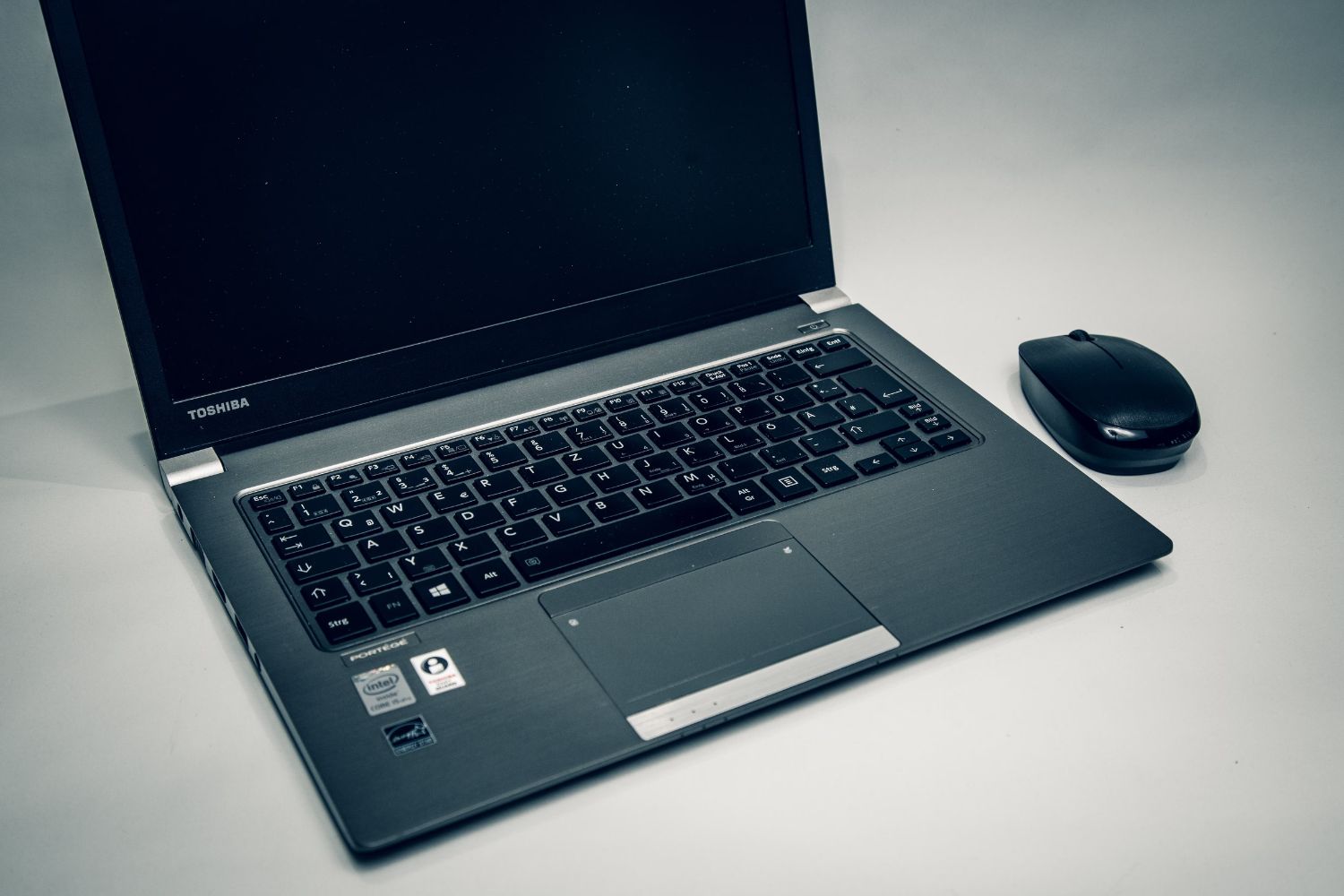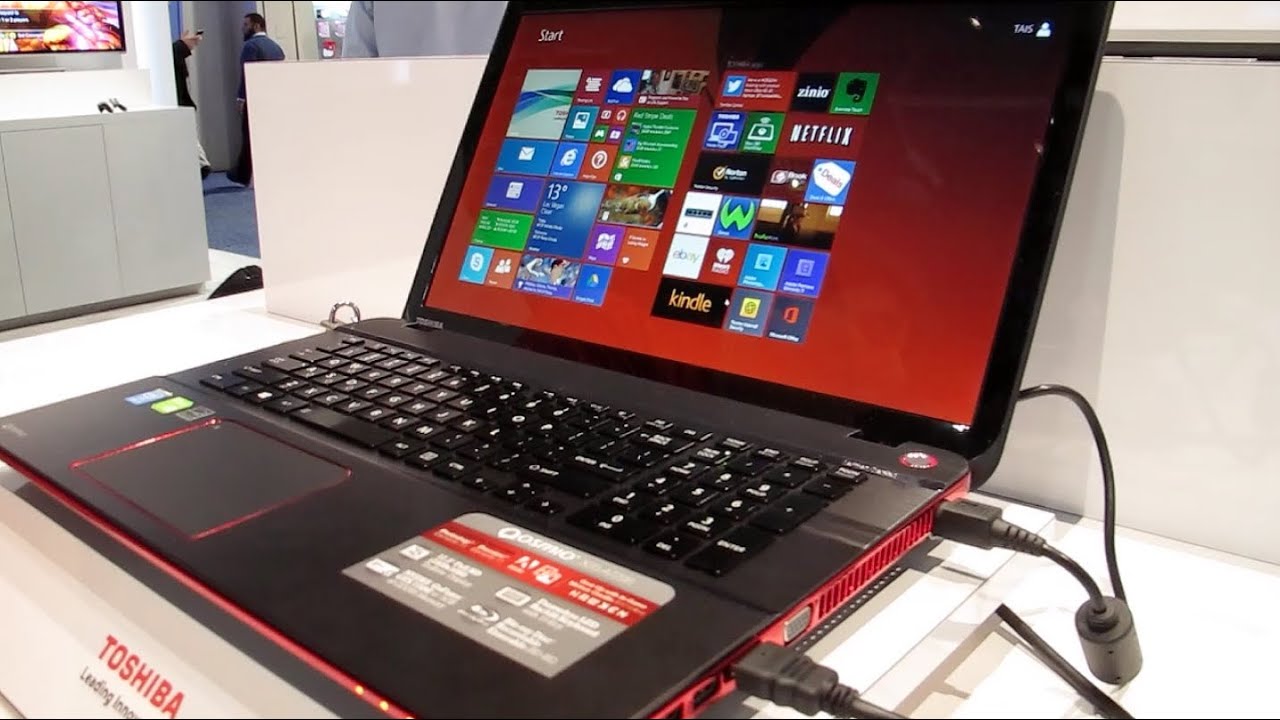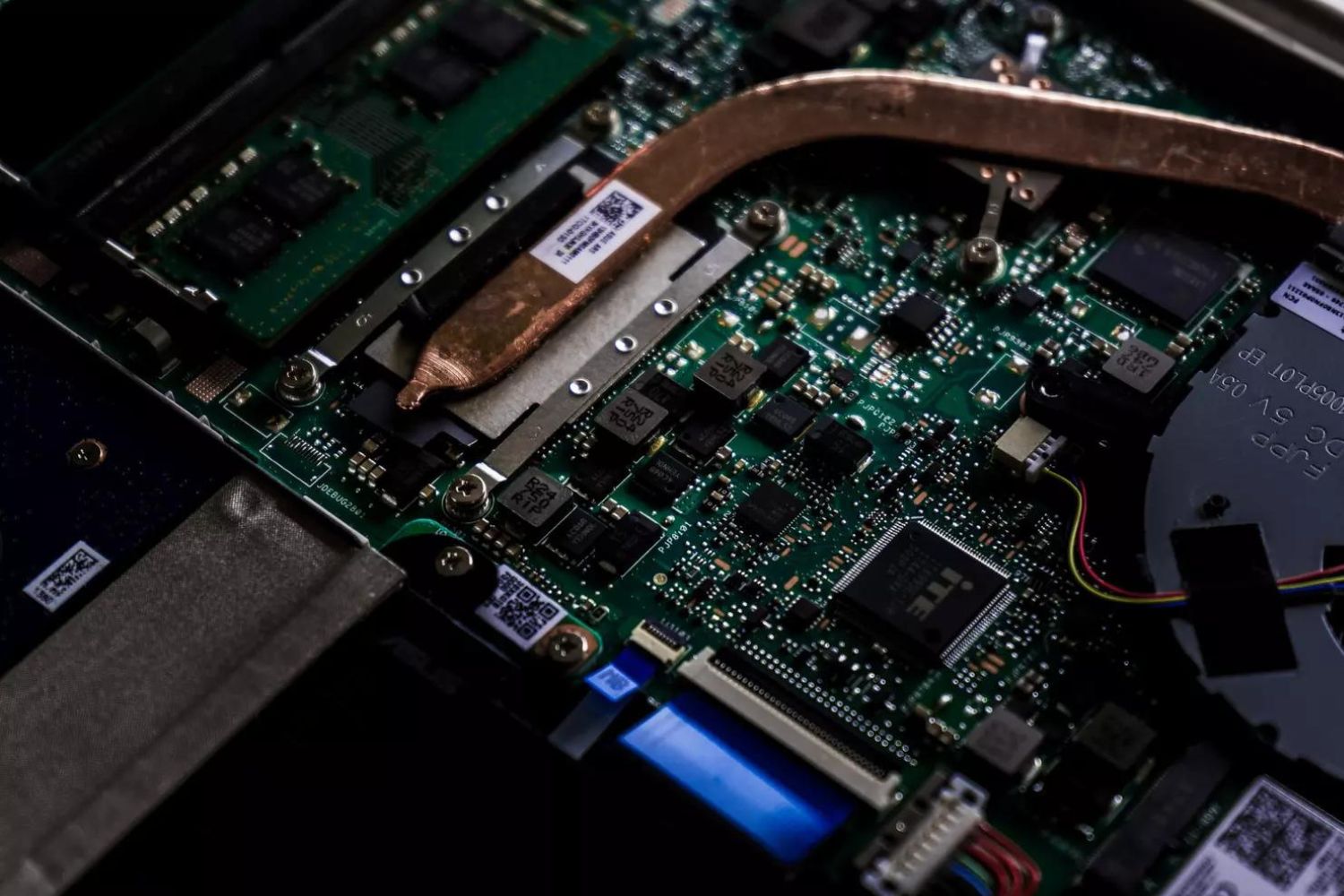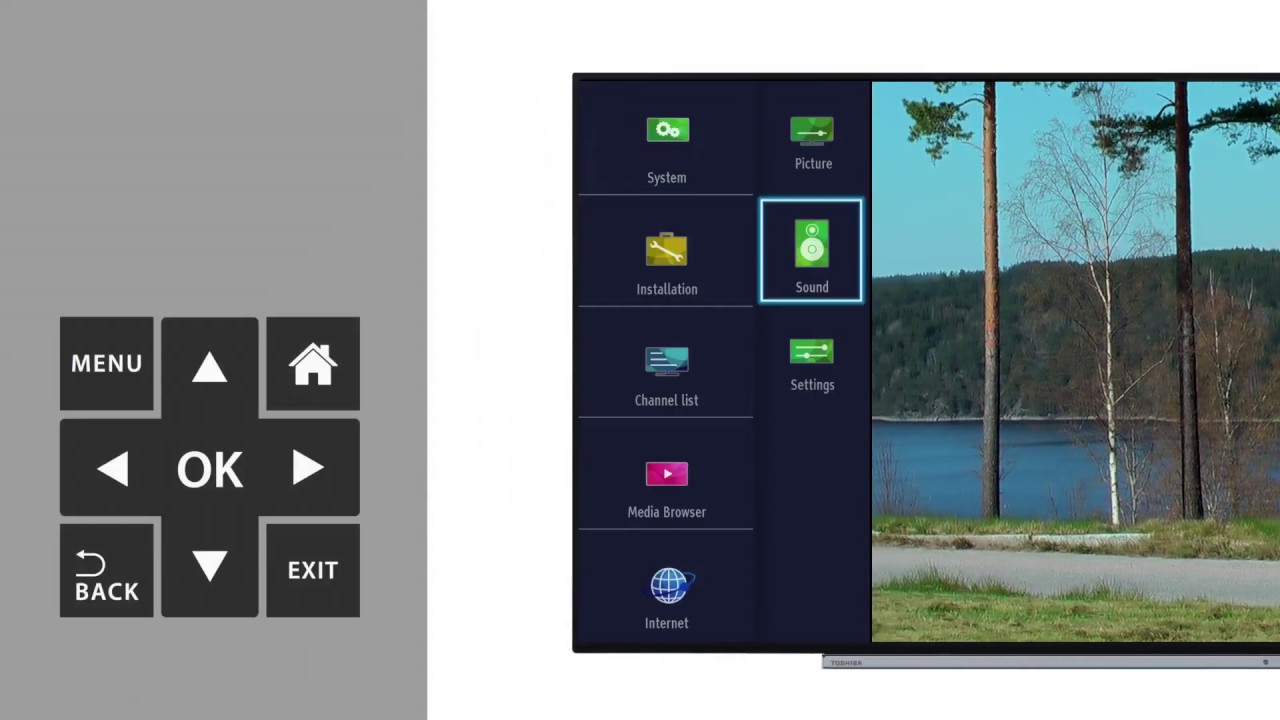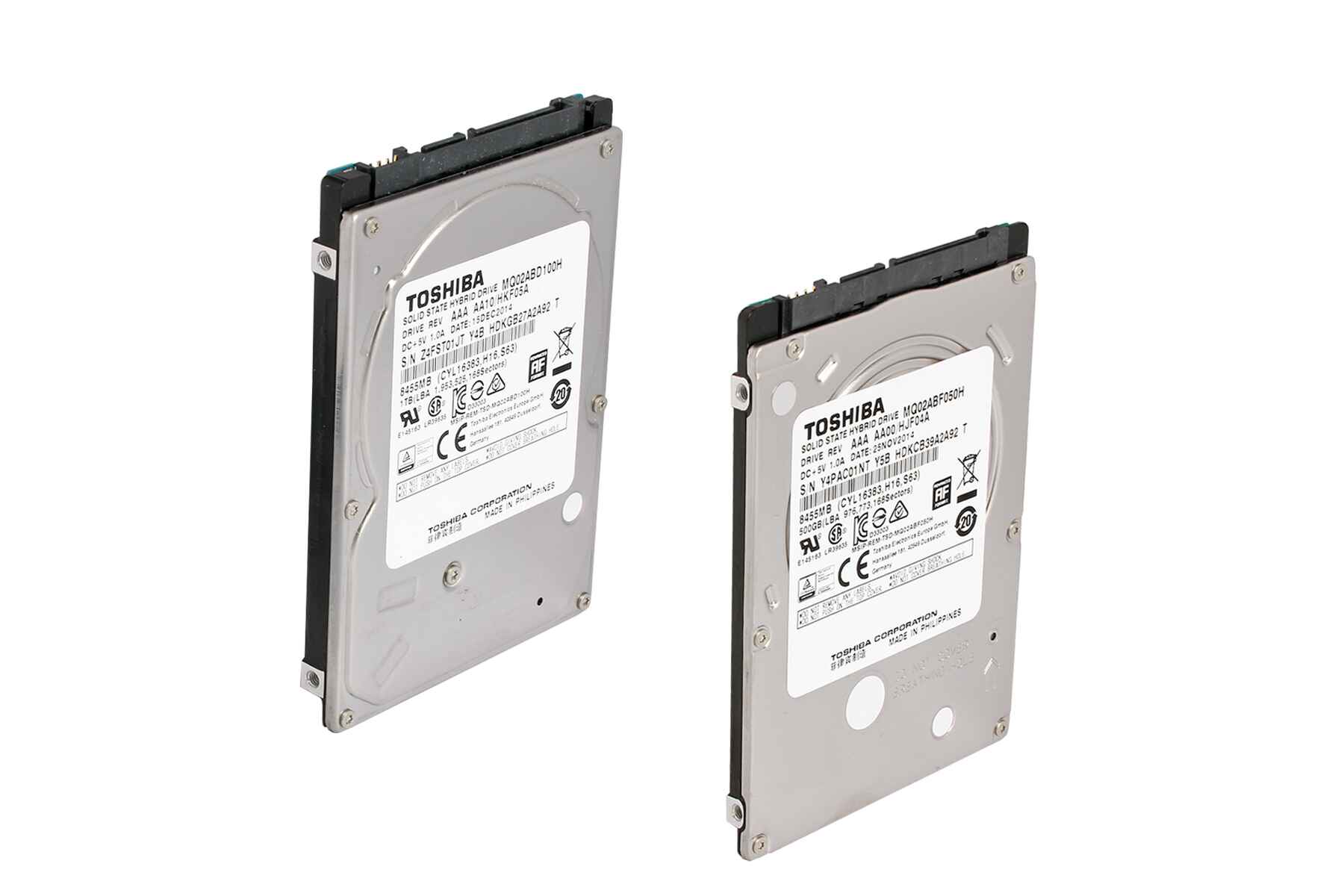Introduction
Welcome to the comprehensive guide on how to fix USB microphone issues specifically on Toshiba laptops. USB microphones are popular among laptop users as they provide a convenient and portable solution for recording audio. However, it can be frustrating when your USB microphone doesn’t work as expected. Whether it’s not being recognized by your laptop or producing distorted audio, we’re here to help you troubleshoot and resolve the problem.
USB microphone issues on Toshiba laptops can occur due to a variety of reasons, ranging from hardware problems to software conflicts. Therefore, it’s important to approach the troubleshooting process systematically to identify the root cause and implement the appropriate solution.
In this guide, we will cover common problems that you may encounter with USB microphones on Toshiba laptops. We will explore steps to check for hardware issues, ensure the proper installation of device drivers, and navigate through the microphone settings in Windows. Additionally, we will discuss troubleshooting sound settings, updating your system and drivers, utilizing the Device Manager, restarting the Windows Audio Service, and even performing a system restore if necessary.
By following the steps outlined in this guide, you will be able to diagnose and fix the issues with your USB microphone, allowing you to resume recording high-quality audio on your Toshiba laptop.
So, without further ado, let’s dive into the troubleshooting process and get your USB microphone back to working condition!
Common Problems with USB Microphones on Toshiba Laptops
USB microphones on Toshiba laptops can encounter several common problems that may hinder their functionality. Understanding these issues can help you identify and resolve the specific problem you are facing. Here are some common problems you may experience:
1. USB microphone not recognized: One of the most common issues is when your Toshiba laptop fails to recognize the USB microphone. This can occur if the USB port is faulty or if there is an issue with the connection. In some cases, it may also be due to outdated device drivers.
2. Poor audio quality: Another problem you may encounter is poor audio quality. This can manifest as distorted or muffled sound, low volume, or background noise. Poor audio quality can be caused by improper microphone settings, outdated drivers, or interference from other devices.
3. Microphone not working during calls: If you are unable to use your USB microphone during video calls or online meetings, it could be due to incorrect audio settings, incompatible software, or outdated drivers.
4. Interference from other devices: USB microphones can sometimes experience interference from other electronic devices, such as Wi-Fi routers or other USB peripherals. This can result in static noise or audio interruptions.
5. Compatibility issues: Certain USB microphones may not be fully compatible with your Toshiba laptop or the specific operating system you are using. This can lead to various issues, including unrecognized devices or limited functionality.
Now that we have identified some of the common problems, we can move on to troubleshooting and resolving these issues. In the following sections, we will provide step-by-step instructions to help you fix your USB microphone on your Toshiba laptop.
Checking Hardware Issues
When troubleshooting USB microphone issues on your Toshiba laptop, it’s important to start by checking for any hardware-related problems. Here are some steps you can follow:
1. Inspect the USB port: Examine the USB port on your laptop to ensure it is clean, free of debris, and undamaged. A faulty USB port can prevent the proper connection of the microphone. If you notice any issues, try using a different USB port or gently clean the port with compressed air.
2. Try a different USB cable: The USB cable connecting your microphone to the laptop may be damaged or faulty. Connect your USB microphone to a different USB port using a known working cable to determine if the issue lies with the cable.
3. Test the microphone on another device: Connect the USB microphone to another computer or device to see if it functions correctly. If the microphone works on other devices, it indicates a problem specific to your Toshiba laptop.
4. Check for power supply: Some USB microphones require an external power source. Ensure that your microphone is properly powered, either through batteries or an external power supply, if applicable.
5. Verify USB microphone compatibility: Confirm that your USB microphone is compatible with your Toshiba laptop and the operating system you are using. Check the manufacturer’s specifications or consult their support documentation for compatibility information.
By thoroughly checking the hardware associated with your USB microphone, you can rule out any physical faults and focus on resolving software-related issues. If you determine that the hardware is functioning correctly, proceed to the next section, where we will explore software-related troubleshooting steps.
Ensuring Proper Installation of Device Drivers
One common cause of USB microphone issues on Toshiba laptops is improper installation or outdated device drivers. To ensure proper functionality of your USB microphone, follow these steps to check and update your device drivers:
1. Access Device Manager: Press the Windows key + X on your keyboard and select “Device Manager” from the menu that appears. Alternatively, you can search for “Device Manager” in the Windows search bar.
2. Expand the “Sound, video, and game controllers” section: In the Device Manager window, locate and click on the arrow next to “Sound, video, and game controllers” to expand the section.
3. Check for the USB microphone: Look for your USB microphone in the list of devices. It may be listed as a specific model or as a generic USB audio device. If you cannot find the microphone, it may indicate a connection or hardware issue.
4. Update the device driver: Right-click on the USB microphone or the generic USB audio device and select “Update driver.” Follow the on-screen instructions to search for the latest driver updates automatically. If any updates are found, proceed with the installation. Restart your laptop after updating the drivers to ensure the changes take effect.
5. Manually install drivers: If the automatic update fails or does not find any updates, you can manually install the drivers. Visit the manufacturer’s website of your USB microphone and search for the latest available drivers. Download the appropriate driver for your operating system and follow the installation instructions provided by the manufacturer.
6. Uninstall and reinstall drivers: If the USB microphone still does not work after updating the drivers, you can try uninstalling and reinstalling the drivers. In the Device Manager, right-click on the USB microphone or the generic USB audio device and select “Uninstall device.” Then, restart your laptop and let Windows automatically reinstall the drivers.
By ensuring that your USB microphone has the latest and correct device drivers installed, you can eliminate compatibility issues and enhance its functionality on your Toshiba laptop. Proceed to the next section to learn how to adjust microphone settings within Windows.
Adjusting Microphone Settings in Windows
When troubleshooting USB microphone issues on your Toshiba laptop, adjusting the microphone settings in Windows can often resolve the problem. Here are the steps to adjust the microphone settings:
1. Access Sound settings: Right-click on the speaker icon in the system tray and select “Open Sound settings.” Alternatively, you can go to the Start menu, click on the gear icon for Settings, then navigate to System > Sound.
2. Select the Input device: In the Sound settings window, click on the “Input” tab. Under the “Choose your input device” section, select your USB microphone from the drop-down menu. Make sure it is set as the default recording device.
3. Manage microphone levels: Click on the “Device Properties” link next to the selected input device. In the new window, go to the “Levels” tab. Adjust the microphone volume by dragging the slider. Ensure that the volume is set to an appropriate level and not muted.
4. Enable exclusive mode: In the same “Device Properties” window, switch to the “Advanced” tab. Check the box next to “Allow applications to take exclusive control of this device” and click “Apply” to save the changes. This can prevent conflicts between applications and improve microphone performance.
5. Configure microphone enhancements: Still in the “Device Properties” window, switch to the “Enhancements” tab. Check or uncheck the available options, such as noise suppression or echo cancellation, based on your preferences. Experiment with these settings to see if they improve the audio quality of your USB microphone.
6. Test the microphone: Go back to the Sound settings window and click on the “Device properties” link under the input device. In the new window, click on the “Additional device properties” link. This will open the Microphone Properties window. Go to the “Listen” tab and check the “Listen to this device” box. You should be able to hear your voice through the speakers or headphones connected to your laptop. If not, there may still be additional issues to address.
By adjusting the microphone settings in Windows, you can optimize the performance of your USB microphone on your Toshiba laptop. Next, we will explore troubleshooting the sound settings to further resolve any audio-related problems.
Troubleshooting Sound Settings
If you are still experiencing USB microphone issues on your Toshiba laptop, troubleshooting the sound settings can help to identify and resolve audio-related problems. Here are some steps to troubleshoot sound settings:
1. Access the Sound Control Panel: Right-click on the speaker icon in the system tray and select “Sounds.” Alternatively, you can go to the Start menu, click on the gear icon for Settings, then navigate to System > Sound > Sound Control Panel.
2. Check default playback and recording devices: In the Sound Control Panel, go to the “Playback” tab and ensure the correct audio output device is selected as the default. Similarly, navigate to the “Recording” tab and set your USB microphone as the default recording device.
3. Configure microphone privacy settings: In the Sound Control Panel, switch to the “Recording” tab, right-click on your USB microphone, and select “Properties.” In the Properties window, navigate to the “Privacy” tab and ensure that the microphone access for apps is enabled.
4. Disable audio enhancements: In the Sound Control Panel, go to the “Playback” tab, right-click on your default playback device, and select “Properties.” In the Properties window, navigate to the “Enhancements” tab and check the box to disable all audio enhancements. This can eliminate any conflicts that may affect the performance of your USB microphone.
5. Adjust sound levels: In the Sound Control Panel, go to the “Recording” tab, select your USB microphone, and click on the “Properties” button. In the Properties window, navigate to the “Levels” tab and ensure that the microphone volume is set to an appropriate level. Adjust the slider if necessary.
6. Enable exclusive mode: In the Sound Control Panel, go to the “Advanced” tab under the Properties window of your USB microphone. Check the box next to “Allow applications to take exclusive control of this device.” This can prevent any conflicts and improve microphone performance.
7. Restart Windows Audio Service: Press the Windows key + R to open the Run dialog box. Type “services.msc” and press Enter to open the Services window. Locate “Windows Audio” and “Windows Audio Endpoint Builder,” right-click on each service, and select “Restart.”
By troubleshooting the sound settings in Windows, you can resolve any audio-related issues and optimize the performance of your USB microphone on your Toshiba laptop. If the problem persists, it may be necessary to update your Windows system and device drivers, as we will explore in the next section.
Updating Windows and Drivers
If you’re still facing USB microphone issues on your Toshiba laptop, updating your Windows system and device drivers can often help resolve these problems. Here are the steps to update Windows and drivers:
1. Update Windows: Ensure that your Windows operating system is up to date with the latest updates. Go to the Start menu, click on the gear icon for Settings, then navigate to Update & Security. Click on “Check for updates” and let Windows download and install any available updates.
2. Update device drivers: Updating device drivers can improve the compatibility and performance of your USB microphone. There are two ways to update drivers:
- Automatic Update: Visit the Toshiba support website or the manufacturer’s website of your USB microphone to check for available driver updates. Download and install the latest drivers based on your specific model and operating system.
- Device Manager: Press the Windows key + X on your keyboard and select “Device Manager.” Expand the “Sound, video, and game controllers” section and right-click on your USB microphone. Select “Update driver” and follow the on-screen instructions to search and install the latest driver updates automatically.
3. Restart your laptop: After updating Windows and device drivers, it’s important to restart your laptop. This ensures that all the changes take effect and helps to clear any temporary issues.
Regular updates to both your Windows system and device drivers can often resolve compatibility issues and provide performance enhancements for your USB microphone. However, if the problem persists, proceed to the next section where we will explore using the Device Manager to fix USB microphone issues on your Toshiba laptop.
Using Device Manager to Fix USB Microphone Issues
If you’re still experiencing USB microphone issues on your Toshiba laptop, utilizing the Device Manager can help diagnose and fix the problem. Here’s how you can use the Device Manager to address USB microphone issues:
1. Access Device Manager: Press the Windows key + X on your keyboard and select “Device Manager” from the menu that appears. Alternatively, you can search for “Device Manager” in the Windows search bar.
2. Expand the “Sound, video, and game controllers” section: In the Device Manager window, locate and click on the arrow next to “Sound, video, and game controllers” to expand the section.
3. Uninstall USB microphone: Right-click on your USB microphone and select “Uninstall device.” Confirm the action if prompted. This will remove the driver software associated with the USB microphone from your laptop.
4. Disconnect USB microphone: Disconnect the USB microphone from your laptop. Wait for a few seconds, and then reconnect it to a different USB port. This allows the system to detect and reinstall the USB microphone.
5. Check for driver updates: Right-click on the “Sound, video, and game controllers” section and select “Scan for hardware changes.” This will prompt the system to search for any connected devices and install the appropriate drivers.
6. Reconfigure microphone settings: After the driver installation is complete, go to the Sound settings in Windows and select your USB microphone as the default recording device. Adjust the microphone levels and other settings as needed.
By using the Device Manager, you can effectively uninstall and reinstall the USB microphone drivers, which can often resolve any software conflicts or issues. After implementing these steps, test your USB microphone to see if it is functioning properly on your Toshiba laptop.
If the issue persists, it may be necessary to restart the Windows Audio Service, which we will explore in the next section.
Restarting the Windows Audio Service
If you’re still encountering USB microphone issues on your Toshiba laptop, restarting the Windows Audio Service can help resolve any audio-related problems. Here’s how you can restart the Windows Audio Service:
1. Open the Run dialog box: Press the Windows key + R on your keyboard to open the Run dialog box.
2. Type “services.msc”: In the Run dialog box, type “services.msc” and press Enter. This will open the Services window.
3. Locate the Windows Audio Service: Scroll down the list of services in the Services window and locate “Windows Audio” and “Windows Audio Endpoint Builder.”
4. Restart the services: Right-click on each service, first “Windows Audio,” and then “Windows Audio Endpoint Builder,” and select “Restart” from the context menu. This will stop and restart the services.
5. Check the status: After restarting the services, check the status column to ensure that both services show “Running.”
6. Test the USB microphone: Once the services are restarted, try using your USB microphone again. Verify if it is functioning correctly and if the issues you were experiencing have been resolved.
Restarting the Windows Audio Service can help clear any temporary issues or conflicts that may have been affecting the functionality of your USB microphone. If the problem persists, you could try performing a system restore, which we will explore in the next section.
Performing a System Restore
If you have tried all the previous troubleshooting steps and are still unable to resolve the USB microphone issues on your Toshiba laptop, performing a system restore can be an effective solution. Here’s how you can perform a system restore:
1. Access the System Restore: Go to the Start menu, type “System Restore” in the search bar, and select “Create a restore point” from the search results. This will open the System Properties window with the System Protection tab selected.
2. Initiate the System Restore: Click on the “System Restore” button in the System Protection tab. This will launch the System Restore wizard.
3. Select a restore point: In the System Restore wizard, select “Choose a different restore point” and click “Next.” This will show you a list of available restore points, usually based on specific dates or events. Choose a restore point that predates the USB microphone issues.
4. Confirm the restore point: Click “Next” and then “Finish” to confirm the restore point selection. A window will appear, warning you that the system will be restored to the selected point. Carefully review the information and click “Yes” to proceed.
5. Perform the system restore: The system restore process will begin and may take some time to complete. Your laptop will restart during the process, so ensure that you have saved any unsaved work beforehand.
6. Test the USB microphone: Once the system restore is complete and your laptop has restarted, test your USB microphone to see if the issues have been resolved. Verify if it is working correctly and if the problematic behavior has been resolved.
Performing a system restore allows you to revert your Toshiba laptop to a previous state before the USB microphone issues occurred. This can effectively undo any changes that may have caused the problems and restore system settings to a more stable state.
Note: Performing a system restore will undo any system settings changes made after the selected restore point, so it’s essential to choose a restore point carefully.
If the USB microphone issues persist even after performing a system restore, it may be worth seeking further assistance from Toshiba support or a qualified technician.
Conclusion
Resolving USB microphone issues on your Toshiba laptop can be a frustrating ordeal, but by following the troubleshooting steps outlined in this guide, you can effectively diagnose and fix the problem. Here’s a quick recap of the steps we covered:
1. Checked for hardware issues by inspecting the USB port and cable, testing the microphone on another device, and ensuring compatibility.
2. Ensured proper installation of device drivers by updating them through the Device Manager or manually installing the latest versions.
3. Adjusted microphone settings in Windows by selecting the correct input device, managing microphone levels, enabling exclusive mode, and configuring enhancements.
4. Troubleshot sound settings by checking default playback and recording devices, configuring privacy settings, disabling audio enhancements, and adjusting sound levels.
5. Updated Windows and device drivers to ensure compatibility and enhance performance.
6. Used the Device Manager to uninstall and reinstall USB microphone drivers.
7. Restarted the Windows Audio Service to clear temporary issues and conflicts.
8. Performed a system restore to revert to a previous state before the USB microphone issues occurred.
Following these steps systematically can help you identify the root cause of the problem and implement the appropriate solutions. However, if the issues persist, it may be necessary to seek further assistance from Toshiba support or a qualified technician.
We hope this guide has been helpful in addressing your USB microphone issues on your Toshiba laptop. Remember to keep your system and drivers updated regularly and maintain proper hardware hygiene to prevent future problems. With a properly functioning USB microphone, you can enjoy crystal-clear audio for your recording, online meetings, and other multimedia needs.







